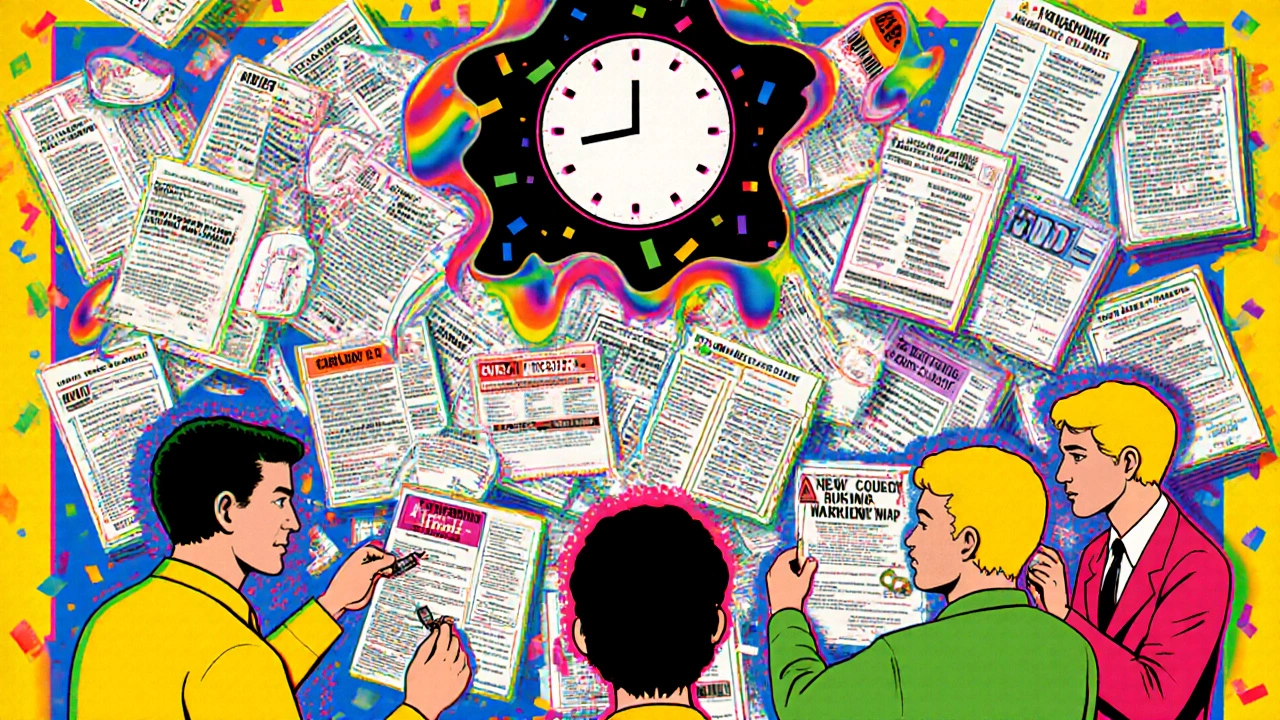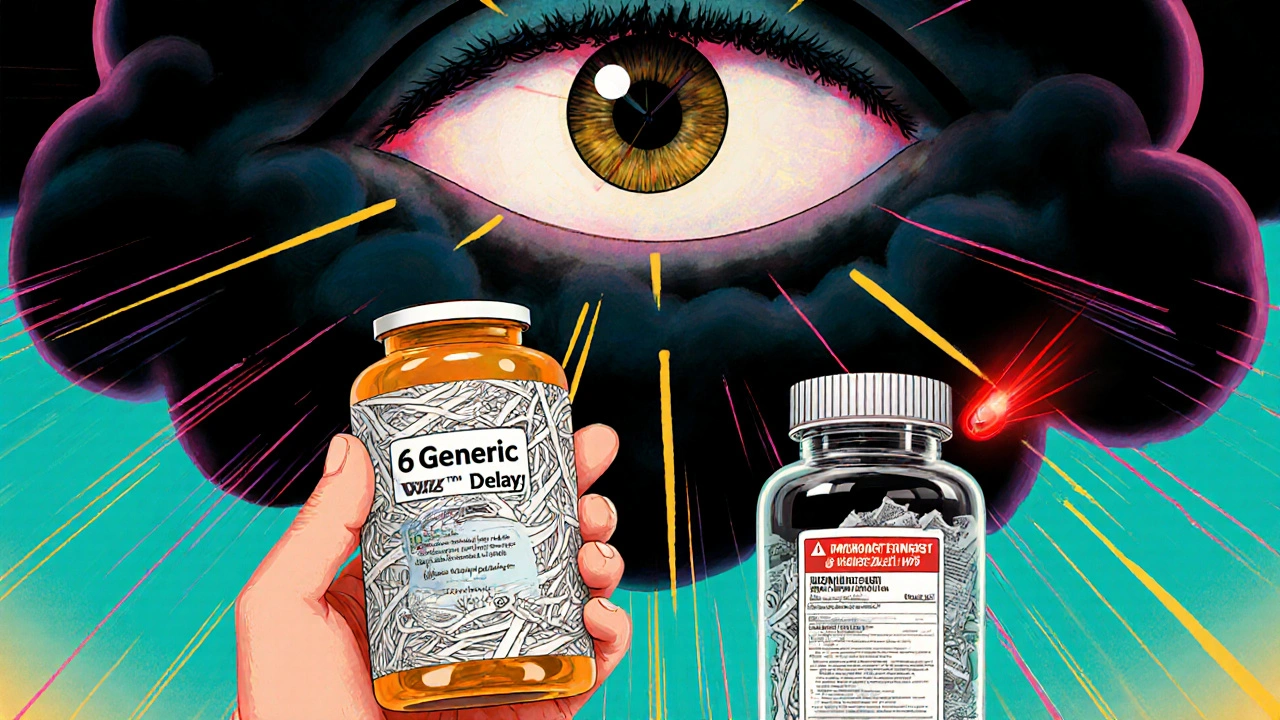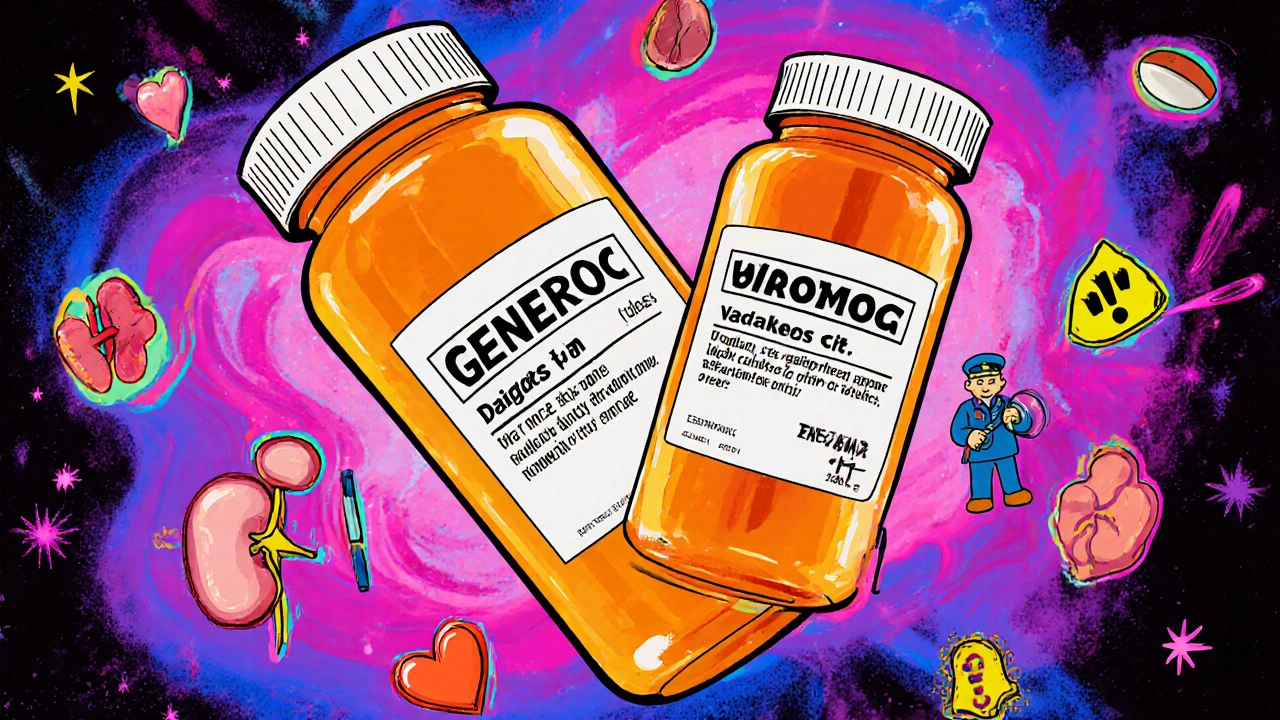When you pick up a generic pill at the pharmacy, you expect it to work just like the brand-name version. But what you don’t see is the strict set of rules behind the label on that bottle. The FDA doesn’t just approve generic drugs for safety and effectiveness-it demands their labeling be an exact match to the brand-name drug, down to the wording, formatting, and warnings. This isn’t just bureaucracy. It’s a safety rule designed to prevent confusion among patients and doctors. But here’s the catch: that rule also creates a dangerous delay when new safety information emerges.
Identical Labeling: The Core Rule
Under Section 505(j)(2)(A)(v) of the Federal Food, Drug, and Cosmetic Act, generic drug manufacturers must submit an Abbreviated New Drug Application (ANDA) that proves their product is bioequivalent to the Reference Listed Drug (RLD)-the original brand-name version. But bioequivalence isn’t enough. The FDA also requires that the generic’s labeling be identical to the RLD’s in every way, except for a few specific exceptions.
That means the indications, dosage instructions, contraindications, warnings, and adverse reactions must match word-for-word. If the brand-name label says, "May increase risk of kidney injury in patients over 75," the generic must say the exact same thing. No rewording. No simplifying. No adding clarifications. This rule applies to every prescription drug label, including those formatted under the Physician Labeling Rule (PLR), which has been mandatory since 2006. The PLR enforces a standardized 24-section structure, including "Highlights," "Recent Major Changes," "Indications and Usage," and "Use in Specific Populations." Generic manufacturers must convert to this format the moment the RLD does.
The only permitted differences? The manufacturer’s name, address, and National Drug Code (NDC) number. Even the font size or spacing can’t be changed unless required by the printing process. The FDA’s Division of Labeling Review (DLR) reviews about 1,200 ANDA submissions each year, and labeling issues account for 37% of all complete response letters issued in 2024. That’s nearly four in ten applications held up because the label didn’t match the RLD exactly.
Who Tracks the Changes? You Do.
Here’s where things get tricky. Generic drug companies don’t get automatic notifications when the brand-name label changes. The FDA doesn’t send alerts. The responsibility falls entirely on the generic manufacturer to monitor the RLD’s label updates. And that means checking Drugs@FDA, the FDA’s official database of approved drug labels, every single week.
Drugs@FDA updates every Tuesday with new labeling changes. As of January 2025, it contained 2,850 reference listed drugs. For a company with 50 approved generics, that’s 50 different labels to track-each potentially changing at any time. Leading generic manufacturers now assign 3 to 5 full-time regulatory affairs staff per 50 products just to monitor these updates. Smaller companies often struggle. A 2024 survey by Arnold & Porter LLP found that 68% of regulatory professionals in the generic industry say tracking RLD changes across multiple therapeutic areas is one of their biggest challenges.
The FDA recommends subscribing to CDER’s electronic notification system, which sends email alerts when labeling changes occur in specific drug classes. Eighty-two percent of companies use this tool. But even then, errors happen. A 2024 FDA audit found that 17% of RLD entries in Drugs@FDA had temporary inconsistencies during labeling transitions-meaning the label in Drugs@FDA didn’t match the one in the Orange Book. Manufacturers have to cross-check multiple sources to stay compliant.
The Safety Gap: Why This System Is Broken
Brand-name drugmakers can update their labels independently. If new safety data emerges-say, a rare but serious liver injury linked to a drug-they can file a "Changes Being Effected" (CBE) supplement and update the label within 30 days, even before FDA approval. They don’t need to wait. But generic manufacturers can’t do that. They must wait for the RLD to update its label, then wait for the FDA to approve their own labeling change to match it.
This creates a dangerous lag. A 2024 study in JAMA Internal Medicine found that this delay affects 9,400 generic drug products-89% of all prescriptions filled in the U.S. On average, safety updates take 6 to 12 months to reach generic labels. That’s not a minor delay. That’s a public health risk.
Take the 2022 valsartan recall. Contaminated batches were linked to cancer risk. The brand-name manufacturer updated its label to warn about the contamination. But generic makers couldn’t update their labels until the FDA approved the RLD change. Patients taking generic valsartan were left with outdated labels that didn’t mention the risk. The FDA issued a Drug Safety Communication, but by then, thousands had already been exposed.
Dr. Robert Temple, former Deputy Center Director at CDER, called this gap "unacceptable" in a January 2025 New England Journal of Medicine commentary. He pointed out that over 6 billion generic prescriptions are filled each year in the U.S. If labeling can’t keep up with safety science, the system is failing patients.

What’s Changing? The MODERN Labeling Act and Beyond
The FDA knows this is a problem. The 2020 MODERN Labeling Act was passed to fix outdated labels when the original RLD has been discontinued. Before this law, if the brand-name drug was pulled from the market, the generic’s label stayed frozen in time-even if new safety data emerged. Now, manufacturers can petition the FDA to update those labels using the best available evidence, even without an active RLD.
As of January 2025, over 1,200 withdrawn RLDs affect 3,500 generic products. The FDA released draft guidance in early 2025 on how to handle these cases. But this doesn’t solve the bigger issue: the inability to update labels proactively during active RLD use.
The FDA proposed a rule in November 2023 (Docket No. FDA-2023-N-1234) that would allow generic manufacturers to update labels with new safety information under certain conditions-similar to how brand companies can. But as of now, that rule is still pending. Until it’s finalized, the safety gap remains.
What Happens If You Don’t Comply?
The FDA doesn’t take labeling noncompliance lightly. Between January 2023 and December 2024, the agency issued 47 warning letters specifically citing labeling discrepancies as the primary violation. These aren’t fines-they’re formal notices that your product is misbranded under federal law. If you don’t fix it, the FDA can seize your inventory, block shipments, or even withdraw approval of your ANDA.
For small manufacturers, this is catastrophic. Labeling compliance already makes up 18-22% of total ANDA maintenance costs. Small firms spend an average of $147,500 per product annually just to keep labels current. Large companies like Teva, Viatris, and Sandoz have teams of 50-120 people dedicated to labeling. But for a startup with 10 products? One missed update could mean losing their entire portfolio.

What’s Next? AI and Automation Are Coming
The FDA is working on a solution. Its Digital Transformation Roadmap includes the Next Generation Generic Drug Labeling System, set to launch in Q3 2025. This system will use AI to automatically detect changes in RLD labels, cross-reference them with active ANDAs, and send real-time alerts to manufacturers. Beta testing begins April 15, 2025, with 15 major generic companies involved.
Industry analysts predict labeling compliance costs will rise 25-30% over the next five years as the FDA tightens oversight. Generic manufacturers will invest $2.8 billion cumulatively in labeling infrastructure by 2029. But the goal is clear: eliminate delays, reduce human error, and make sure patients get the most accurate safety information-no matter which version of the drug they take.
What Patients and Pharmacists Should Know
If you’re a patient, don’t assume your generic drug’s label is always up to date. If you hear about a new warning for a brand-name drug, check if your generic has the same update. Ask your pharmacist. If you’re a pharmacist, be vigilant. Outdated labels are still being dispensed. A Reddit thread from March 2025 had over 140 comments from pharmacists expressing frustration: "I had to explain to a patient why their generic label didn’t mention the heart rhythm risk that was in the news last month. It’s not their fault-it’s the system."
The FDA’s goal is uniformity. But uniformity without timeliness isn’t safety-it’s a liability. Until generic manufacturers can act on new safety data without waiting for the brand-name company, patients remain at risk. The system is broken. And it’s not just about paperwork. It’s about lives.
Can a generic drug have different labeling than the brand-name version?
No, not legally. Under FDA rules, generic drug labeling must be identical to the Reference Listed Drug (RLD) in all content, including warnings, dosage instructions, and contraindications. The only permitted differences are the manufacturer’s name, address, and National Drug Code (NDC) number. Any other changes require FDA approval and must mirror the RLD exactly.
How often do generic drug labels need to be updated?
Generic drug labels must be updated "at the earliest time possible" after the RLD’s label is changed and approved by the FDA. There’s no fixed schedule-it’s triggered by the RLD. Manufacturers must monitor Drugs@FDA weekly for updates. The timeline depends on the type of supplement filed: Prior Approval Supplements take up to 10 months, CBE-30 allows immediate change with 30-day notice, and CBE supplements require 30 days before implementation.
What is the Physician Labeling Rule (PLR) and how does it affect generics?
The Physician Labeling Rule (PLR), implemented in 2006, requires all prescription drug labels to follow a standardized 24-section format, including "Highlights," "Recent Major Changes," and detailed sections on indications, dosage, and adverse reactions. Generic drugs must adopt the PLR format as soon as the RLD does. This ensures consistency across all versions of the drug and improves readability for healthcare providers.
Why can’t generic manufacturers update their labels when new safety data emerges?
Unlike brand-name manufacturers, generic drugmakers cannot independently update labels with new safety information. They must wait for the RLD to update its label first, then submit a matching change to the FDA. This creates delays of 6-12 months, which the FDA acknowledges as a safety gap. A proposed rule in 2023 would allow generics to update labels proactively under certain conditions, but it has not yet been finalized.
What happens if a generic drug label doesn’t match the RLD?
If a generic drug’s label doesn’t match the RLD, the FDA can issue a warning letter, seize inventory, or withdraw approval of the ANDA. Between 2023 and 2024, 47 warning letters were issued specifically for labeling discrepancies. Noncompliance is treated as misbranding under federal law and can lead to legal and financial consequences for the manufacturer.
How do generic manufacturers track RLD label changes?
Manufacturers primarily use Drugs@FDA, the FDA’s official database of approved labels, which is updated weekly. Many subscribe to CDER’s electronic notification system for alerts on labeling changes in specific therapeutic classes. Leading companies assign 3-5 full-time regulatory staff per 50 products to monitor these updates and cross-check with the Orange Book and other sources to avoid discrepancies.
Will the FDA allow generic manufacturers to update labels faster in the future?
Yes, but not yet. The FDA proposed a rule in November 2023 that would let generic manufacturers update labels with new safety information without waiting for the RLD to change first. This would close the current safety gap. The rule is still under review as of early 2025. In the meantime, the FDA is testing an AI-powered labeling system set to launch in late 2025 to automate change detection and reduce delays.


Laurie Sala
November 22, 2025 AT 08:56Why is this still a thing??? I had a friend die because her generic blood pressure med didn’t update the warning about kidney failure-same drug, same company, different label. The FDA’s ‘exact match’ rule is a death sentence wrapped in bureaucracy. I’m so tired of people calling this ‘uniformity’-it’s not uniformity, it’s negligence.!!!
Lisa Detanna
November 23, 2025 AT 10:35Look, I get why the FDA wants consistency-but we’re talking about people’s lives here. If a brand-name drug gets a black box warning for liver toxicity, why should a grandma on generic lisinopril wait a year to find out? This isn’t about trademark protection-it’s about trust. We need a system where safety trumps paperwork. Period.
Demi-Louise Brown
November 24, 2025 AT 13:47The regulatory framework governing generic drug labeling is rooted in the principle of therapeutic equivalence. While the intent is to ensure patient safety through standardized information, the current mechanism introduces systemic latency in the dissemination of critical pharmacovigilance data. This delay, empirically documented in peer-reviewed literature, constitutes a clinically significant vulnerability in public health infrastructure.
John Mackaill
November 25, 2025 AT 04:36I work in a pharmacy in London and we get generics from the US all the time. Last month a patient asked why her label didn’t mention the new heart rhythm risk that was all over the news. I had to tell her the system’s broken. She just nodded and said, ‘So I’m the guinea pig now?’ That stuck with me.
Adrian Rios
November 26, 2025 AT 20:48Let me just say this-this isn’t just about labels. This is about who gets to decide what information reaches the people who need it most. Big pharma gets to update their labels in 30 days. Small companies? They’re stuck waiting for someone else to move first. And when that someone else is slow? Patients pay the price. I’ve seen people get sick because they trusted the label. The FDA knows this. They’ve known for years. So why are we still talking about ‘draft guidance’ instead of making it law? It’s not a technical problem-it’s a moral failure.
Casper van Hoof
November 28, 2025 AT 02:48One might posit that the current regulatory paradigm reflects an epistemological hierarchy wherein the innovator drug assumes ontological primacy over its generic counterpart. The labeling rigidity, then, is not merely administrative but metaphysical-a symbolic assertion of origin as truth. But in a world where bioequivalence is scientifically established, does symbolic fidelity to the RLD serve anything but institutional inertia?
Suresh Ramaiyan
November 29, 2025 AT 23:15In India, we don’t have this problem. When a new safety alert comes out, our generic manufacturers update their labels immediately-no waiting for the original brand. We don’t have the same legal framework, but we have something better: common sense. If the medicine is the same, the warning should be the same-right now, not next year.
Katy Bell
November 30, 2025 AT 07:55I’m a pharmacist. I’ve had patients cry because their label didn’t match what they read online. I feel awful. I can’t tell them ‘it’s not my fault’ enough times. The system is broken and we’re all stuck in the middle. 😔
Vivian C Martinez
November 30, 2025 AT 18:32While the FDA’s labeling requirements ensure consistency, the delay in updating safety information for generic drugs represents a significant public health concern. The proposed rule under Docket No. FDA-2023-N-1234, if finalized, would align generic manufacturers with the CBE-0 process, enabling timely updates without waiting for the RLD. This is a necessary and overdue reform.
Ross Ruprecht
December 1, 2025 AT 08:41So… we’re spending billions to fix a problem that exists because someone didn’t want to change a rule from 1984? I’m bored.
Bryson Carroll
December 2, 2025 AT 17:27Generic manufacturers are just lazy. They don’t want to spend the money to update labels so they hide behind the FDA’s rules. If they cared about patients they’d do it anyway. This isn’t a system failure-it’s a corporate failure. And the FDA lets them get away with it
Kane Ren
December 4, 2025 AT 06:41My dad took a generic statin for 8 years. When the brand added the muscle pain warning, his label didn’t update for 11 months. He ended up in the hospital. He didn’t know the risk because the label lied to him. I’m not mad at the FDA-I’m mad at the system that lets this happen. Fix it. Now.
Karla Morales
December 5, 2025 AT 14:54AI is coming in 2025? 😅 That’s cute. But what about the 3,500 generic drugs with dead RLDs? The FDA’s ‘digital transformation’ is just a PR stunt. Real change means letting generics update labels without begging for permission. Until then, this isn’t innovation-it’s a delay tactic. 🤖💊